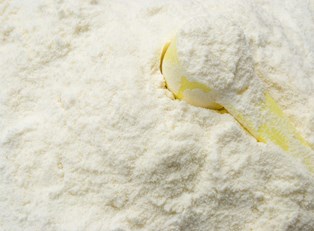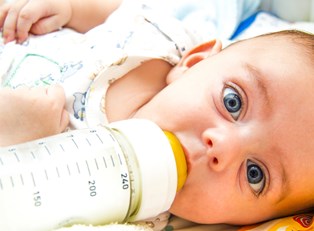For new parents who are anxious to do everything just right for their new addition to the family, preparing formula can, at first, seem intimidating. Fortunately, the preparation itself is simple and straightforward. To ensure safety when it comes to the first food that will nourish your child, it’s important to make sure the formula you choose is in date, kept at the right temperature, and mixed in the correct ratio.
Choosing Your Formula
With infant formula regulated by the FDA — the U.S. Food and Drug Administration — the inclusion of necessary nutrients is quite standardized. If you compare the nutrition facts among several different brands, you’re likely to find little variation. While this means that you shouldn’t need to check for the appropriate protein-fat-and-carbohydrates balance in formula, there are a couple things you should check for while still in the store.
First, make sure that you’re well before the expiration date on the can. Occasionally, products stay on the shelf too long, and infant formula is one of those commodities with which freshness needs to be guaranteed. Additionally, make certain the can is not dented. When the can of liquid formula is compromised, it can mean a crack in the inner layer, which, in turn, can mean the development of rust.
Preparation at Home
When you bring the formula home, store it in a spot that’s not to hot and not too cold — and make sure to keep dry formula far from condensation. Aim to keep the formula where the temperature will hold steady between roughly 55 and 75 degrees Fahrenheit. This will require you to find a spot away from direct sunlight, the stove, heating and air conditioning ducts.
When it comes time to actually prepare the formula, the most important thing is to closely read and follow the direction on the can. Some steps will be necessary regardless of what type of formula you have chosen — namely, starting with clean, dry hands and an equally clean bottle or bottle liner.
From that point, you will want to make sure you pay close attention to what amount of dry formula you mix with what precise amount of water. When you are mixing dry formula, it’s important to make sure any clumps of formula break up thoroughly so that they won’t clog the stream. These steps are important to make sure that your child receives all the needed macronutrients and vitamins to promote growth and development.
Also, pay close attention to the storage and disposal instructions for the mixed formula. Once you either mix dry formula or pour or open a single-serving bottle of liquid formula, you have a limited time period to use it before it needs to be refrigerated. Check to make sure that any leftover portion can be refrigerated — some formulas may indicate that any unused portion should be disposed of. For those brands that do indicate refrigeration of the leftover amount is acceptable, take note of the time frame for using the chilled formula before it must be thrown out.



